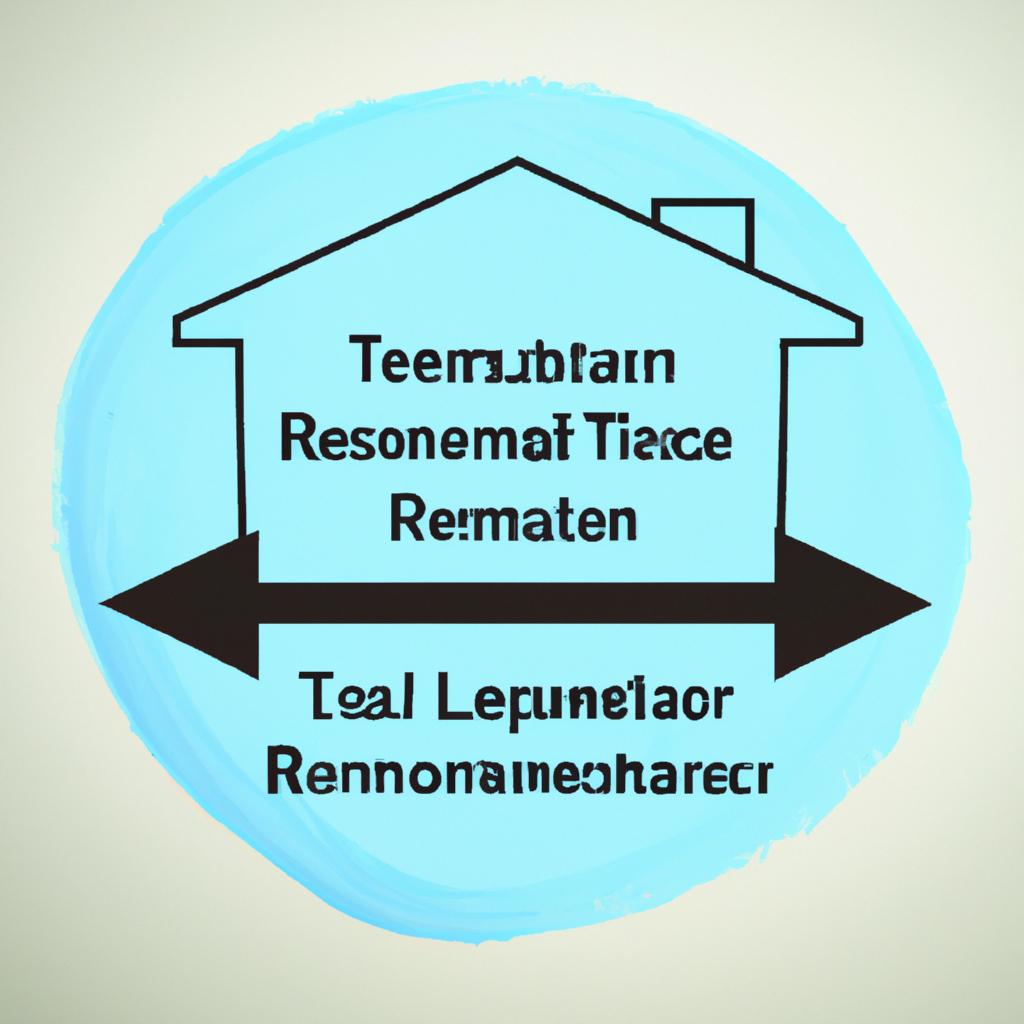In the realm of estate planning, the concept of home transfers and retained life estates holds a unique significance. As experienced lawyers in New York City, at Morgan Legal Group, we understand the intricate nuances of navigating the complexities of such transactions. In this article, we delve into the intricacies of home transfers and retained life estates, shedding light on the key considerations and legal implications involved in these processes. Join us as we unravel the intricacies of safeguarding your assets and securing your legacy through prudent planning and strategic decision-making.
Title: Understanding Home Transfers and Retained Life Estates
When it comes to understanding home transfers and retained life estates, it is essential to grasp the legal nuances and implications involved. A home transfer refers to the process of transferring property ownership from one party to another. This can be done through various means, such as gifting, selling, or inheriting a home. On the other hand, a retained life estate is a legal arrangement where an individual transfers ownership of a property but retains the right to live in or use the property for the rest of their life.
With home transfers and retained life estates, careful consideration must be given to factors such as tax implications, estate planning objectives, and the rights and responsibilities of all parties involved. Proper legal guidance and documentation are crucial to ensure that the transfer is carried out smoothly and in accordance with the law. At Morgan Legal Group, our experienced team of estate planning attorneys can provide expert advice and assistance in navigating the complexities of home transfers and retained life estates to protect your assets and achieve your estate planning goals.

Key Considerations in Home Transfers
When it comes to home transfers and retained life estates, there are several key considerations that individuals need to keep in mind to ensure a smooth and successful transfer process. One important factor to consider is the type of transfer being made, whether it is a gift, sale, or inheritance. Each type of transfer comes with its own set of rules and regulations that must be followed to avoid any legal complications.
<p>Additionally, individuals should consider the implications of retaining a life estate in the property being transferred. Retaining a life estate allows the individual to continue living in the property for the remainder of their life, while still transferring ownership to another party. This can have significant tax and estate planning implications that need to be fully understood before moving forward with the transfer.</p>

Benefits of Retained Life Estates in Estate Planning
Retained life estates can be a valuable tool in estate planning, particularly when it comes to transferring real estate property. By retaining a life estate in a property, the homeowner is able to transfer ownership of the property to a beneficiary while retaining the right to live in the property for the rest of their life. This arrangement can have several benefits, including:
- Retaining Use of Property: With a retained life estate, the homeowner can continue to live in and use the property for as long as they live, providing a sense of security and stability.
- Avoiding Probate: When the homeowner passes away, the property passes directly to the designated beneficiary without having to go through the probate process, saving time and money for loved ones.
| Benefit | Description |
|---|---|
| Control Over Property | Homeowner retains control and use of the property during their lifetime. |
| Avoid Probate | Property passes directly to beneficiary, avoiding the probate process. |

Recommendations for Structuring Home Transfers With Retained Life Estates
In order to structure home transfers with retained life estates effectively, it is crucial to consider the following recommendations:
- Consult with an experienced estate planning attorney: Before proceeding with any home transfer involving a retained life estate, it is essential to seek the guidance of a knowledgeable attorney who specializes in estate planning.
- Clearly outline the terms of the retained life estate: It is important to clearly define the rights and responsibilities of the life tenant and the remainderman in a legally binding document to avoid any confusion or disputes in the future.
| Key Considerations | Importance |
|---|---|
| Duration of the retained life estate | Ensures clarity and certainty |
| Responsibility for property maintenance | Prevents any misunderstandings |
| Provisions for property taxes and insurance | Protects the interests of both parties |
Q&A
Q: What is a home transfer?
A: A home transfer involves transferring ownership of a property from one individual to another.
Q: What is a retained life estate?
A: A retained life estate is a legal arrangement in which an individual retains the right to live in a property for the rest of their life, even after transferring ownership to another person.
Q: How does a retained life estate work in a home transfer?
A: In a home transfer with a retained life estate, the original owner transfers ownership of the property to another individual, but retains the right to live in the property for the remainder of their life.
Q: What are the benefits of a retained life estate in a home transfer?
A: Retained life estates can provide financial benefits, such as reduced estate taxes, while allowing the original owner to continue living in the property.
Q: Are there any drawbacks to a retained life estate in a home transfer?
A: One potential drawback is that the original owner may lose control over the property, as the new owner has legal ownership rights. Additionally, the original owner may be limited in their ability to make changes to the property.
Q: How can someone set up a home transfer with a retained life estate?
A: To set up a home transfer with a retained life estate, individuals should seek the advice of a qualified estate planning attorney who can assist in drafting the necessary legal documents.
In Conclusion
In conclusion, home transfers and retained life estates offer unique solutions for homeowners looking to pass on their property to loved ones while still maintaining some level of control and benefit during their lifetime. By understanding the implications and intricacies of these arrangements, individuals can make informed decisions that will shape the future of their homes and legacy. Whether it be through a simple transfer or a retained life estate, the importance of careful planning and consideration cannot be overstated. Ultimately, the key to a successful home transfer lies in a thoughtful and well-executed strategy that best serves the interests of all parties involved.
 When it comes to planning for the future of your home and assets, it’s important to have an understanding of the different options available to you. One such option is a home transfer with a retained life estate. This may sound like a complicated legal term, but it simply means that you will transfer ownership of your home to someone else while retaining the right to live in it for the rest of your life. Let’s dive into this concept and explore its benefits, practical tips, and real-life examples.
When it comes to planning for the future of your home and assets, it’s important to have an understanding of the different options available to you. One such option is a home transfer with a retained life estate. This may sound like a complicated legal term, but it simply means that you will transfer ownership of your home to someone else while retaining the right to live in it for the rest of your life. Let’s dive into this concept and explore its benefits, practical tips, and real-life examples.
Understanding Home Transfers and Retained Life Estates
In essence, a home transfer with a retained life estate is a way to transfer your property or home to another individual while still maintaining the right to live in it until you pass away. This is often used as an estate planning tool to transfer assets and avoid the probate process. It can also be used to provide for a loved one while ensuring that you have a place to live until the end of your life.
How It Works
The process of a home transfer with a retained life estate involves the transfer of ownership to the new owner, while you retain what is known as a “life estate”. This means that you are still the owner of the property as long as you are alive and have the right to use and live in it. Once you pass away, the new owner will gain full ownership of the property without the need for probate, as it has already been transferred during your lifetime.
Benefits of a Home Transfer with Retained Life Estate
1. Avoiding Probate: One of the biggest benefits of a home transfer with a retained life estate is that it helps avoid the probate process. Probate is the legal process of distributing a person’s assets after they pass away, and it can be lengthy and costly. By transferring ownership of your home during your lifetime, you can avoid this process altogether.
2. Control Over Your Property: While you are still alive, you have complete control over your property. You can continue living in it, making any necessary changes, and even sell it if the need arises. This provides you with peace of mind and the assurance that your needs will be taken care of during your lifetime.
3. Protection for Loved Ones: By transferring your property to a loved one, you are ensuring that they will be taken care of after you pass away. This is often done to avoid family conflicts over inheritance and to make sure that your loved ones are provided for in the future.
Practical Tips for Home Transfers with Retained Life Estates
– Carefully Consider Your Options: Before proceeding with a home transfer, be sure to carefully consider your options and speak with a legal professional. There may be alternative options that better suit your specific situation.
– Be Mindful of Tax Implications: Transferring ownership of your home may have tax implications, so it’s important to consult with a tax professional to understand the potential consequences.
– Choose a Trustworthy New Owner: When transferring your home to someone else, it’s important to select a trustworthy individual or entity. This will provide you with peace of mind knowing that your home will be well taken care of in the future.
Real-Life Example
Let’s take a look at a real-life example of a home transfer with a retained life estate. Sarah is a widow with two adult children. She wants to ensure that her children are taken care of after she passes away, but she also wants to avoid the probate process. She decides to transfer ownership of her home to her daughter, Anna, while retaining a life estate for herself. This means that Sarah will continue to live in the house until she passes away, after which Anna will gain full ownership of the property without the need for probate.
Conclusion
A home transfer with a retained life estate can be an effective estate planning tool for those looking to transfer assets and avoid the probate process. This option provides peace of mind for the homeowner and ensures that their loved ones are taken care of in the future. Be sure to carefully consider your options and consult with professionals to determine if this is the right choice for you.

